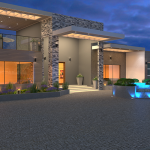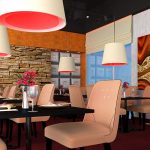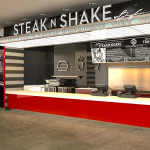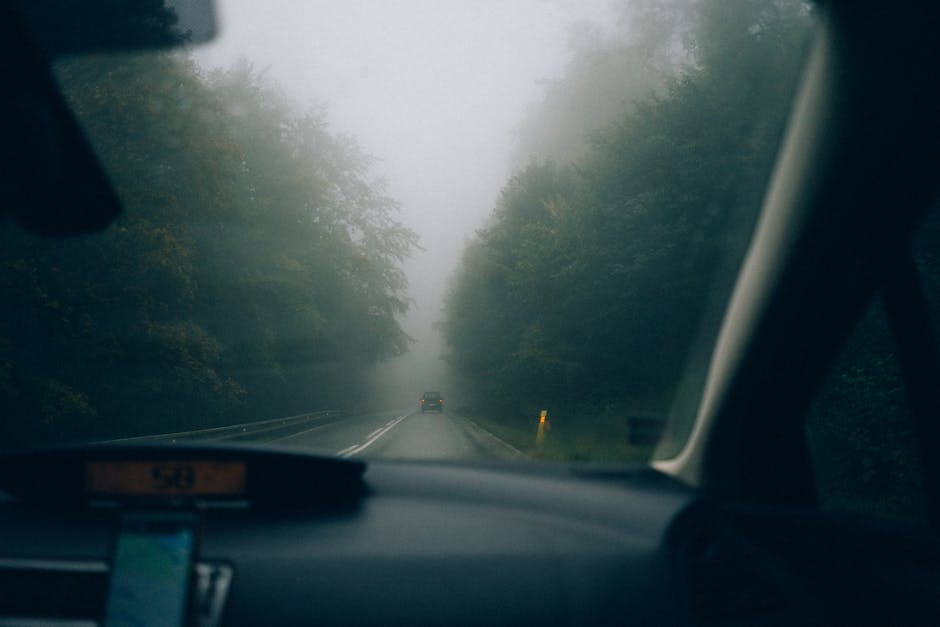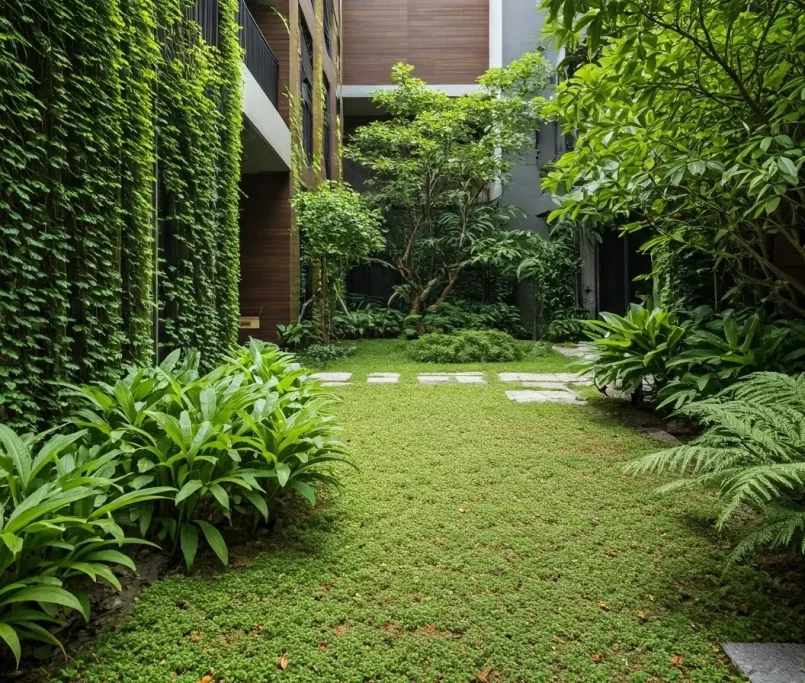Wayfinding Design Trends 2023: What’s New in Interior and Landscape Spaces
Introduction to Wayfinding Design Trends in 2023
Wayfinding design isn’t just about putting up signs to guide you from point A to B. It’s an art and science that blends functionality with aesthetic appeal to create intuitive navigation through spaces. In 2023, this blend is evolving. Today, we’re seeing a shift toward designs that prioritize user experience and environmental friendliness. The focus is on making spaces easy to navigate while ensuring they are inclusive and accessible to everyone. This year, innovative technology like augmented reality and interactive digital signage is coming to the forefront, making directions easier to follow and spaces more engaging. Sustainability is also a key theme, with materials and designs that reduce environmental impact. Plus, there’s a stronger emphasis on local culture and storytelling, transforming ordinary journeys into immersive experiences. In essence, wayfinding design in 2023 is all about creating spaces that don’t just direct us, but also connect and inspire us.
The Evolution of Wayfinding Design in Interior Spaces
Wayfinding design in interior spaces has shifted dramatically from simple signage to immersive experiences. At the heart of this evolution is the goal to ensure people can navigate spaces easily and pleasantly, enhancing user experience. Initially, wayfinding was all about directional signs and maps. Now, it incorporates technology, art, lighting, and architecture to create environments that guide users more naturally. For instance, smart digital signage can adapt to show different messages based on the time of day or specific events, offering a dynamic way to inform and direct visitors. Integrating art and architecture isn’t just about aesthetics; it’s about creating landmarks within a space, making navigation intuitive. Lighting, too, plays a vital role. Soft, guided pathways can lead a visitor through a space without a single word needed. This evolution signifies a shift toward designing spaces that are not only functional but also enriching, making every journey through them an experience.
Innovative Materials in Modern Wayfinding Solutions
Wayfinding isn’t just about signs pointing left or right anymore. Designers are getting creative, using innovative materials to guide us through spaces. Have you seen those floors that light up as you walk by? They’re part of this cool shift. And it’s not just lights. Think recycled plastics turned into signs, or wood from old buildings given a new life as direction markers. These aren’t just pretty; they’re smart too. Reflective and photoluminescent materials are big now, glowing softly to show the way without glaring lights. Even better, these choices help the planet. Using stuff that might otherwise be junk means less waste. Plus, natural materials like stone and wood cut down on plastic use. This trend isn’t just about looking good; it’s about sustainability and innovation working together to make spaces easier to navigate and kinder to the earth.
Digital Integration: The Future of Wayfinding in Landscape Spaces
Digital integration is revolutionizing wayfinding in landscape spaces, making getting around not just easier but also more engaging. Imagine walking through a park and easily navigating to your favorite spot with the help of an interactive digital map right on your smartphone. That’s where the future is headed. More landscape spaces are embedding digital tools like QR codes on signs that visitors can scan to pull up maps, information about the area, or even historical facts. This means less confusion and more enjoyment. What’s more, these digital systems often collect data to improve the visitor experience continually. So, not only do you find your way today, but the system gets better for your visits tomorrow. It’s a smart way to blend technology with nature, enhancing how we interact with our surroundings without taking away from the beauty of the landscape.
Sustainability: A Core Principle in Contemporary Wayfinding Design
Sustainability isn’t just a buzzword in the world of wayfinding design; it’s at the core of how we’re shaping spaces in 2023. Designers are now more than ever integrating eco-friendly materials and energy-efficient technologies to create signage that not only points you in the right direction but does so in harmony with our planet. Whether it’s using recycled metals and plastics, solar-powered lights, or digital screens that consume less energy, the goal is clear: reduce environmental impact while enhancing navigational ease. This holistic approach not only minimizes the carbon footprint but also sets a new standard in how we think about the interaction between humans and their environment. By choosing materials that are durable, we’re also ensuring that these signs last longer, reducing the need for frequent replacements. Sustainable wayfinding is more than a trend; it’s a commitment to a better future.
The Role of Color Psychology in Wayfinding Design
In wayfinding design, color isn’t just about making spaces look good; it’s a powerful tool to guide and inform. Colors speak a language of their own. They can calm us, alert us, and direct us. Warm colors like reds and oranges are vibrant and can grab attention, making them perfect for signaling cautions or important areas. Cool colors like blues and greens, on the other hand, are calming and are often used to indicate general navigation cues.
The psychology behind colors impacts how we perceive spaces. For instance, yellow, being the most visible color to the human eye, is frequently used for cautionary signs or to highlight essential information. Meanwhile, green often symbolizes safety and is used to mark safe exit routes or first aid locations.
In 2023, the trend leans towards using color contrasts and lighting to improve navigation and accessibility. This includes utilizing different shades and tints to cater to those with color vision deficiencies, ensuring wayfinding is inclusive.
By intelligently employing colors, designers can create intuitive navigation systems that guide people through spaces smoothly and efficiently. It’s not only about beauty; it’s about function, ensuring spaces are navigable and safe for everyone.
Inclusive Wayfinding: Designing for Diversity and Accessibility
Inclusive wayfinding is all about making spaces easy to navigate for everyone, no matter who they are or what their needs may be. It’s a crucial trend in 2023, focusing on designing for diversity and accessibility. This approach ensures that signs, maps, and digital directions consider various disabilities and cultural backgrounds. Think larger, easy-to-read fonts, Braille for the visually impaired, and symbols that cross language barriers. It’s not just about following the law; it’s about creating spaces that welcome everyone. By incorporating inclusive wayfinding, designers show they understand the importance of accessibility. This means using contrasting colors for people with visual impairments, providing audio guides, and ensuring paths are wide enough for wheelchair users. The goal is simple yet powerful: make every space open and accessible, showing empathy and respect for all users.
Smart Wayfinding: Technology-Driven Navigation Solutions
Smart wayfinding is changing how we navigate spaces, making it simpler and more intuitive. This technology-driven solution uses digital tools to guide you through interior and landscape spaces with ease. Imagine walking into a large mall and your phone shows you the fastest route to your favorite store, or stepping into a park and an interactive kiosk helps you find your way to the nearest restroom. Smart wayfinding comprises apps, digital signage, and augmented reality to make navigation a no-brainer. This approach is especially handy in complex environments like airports, hospitals, and campuses where getting lost is easy. By merging real-time data, these smart systems can even update you on changes or closures, ensuring you always take the best route. This year, we’re seeing a leap in how these technologies blend seamlessly into our daily routines, making getting from point A to B smoother than ever.
Wayfinding in Public vs. Private Spaces: A Comparative Analysis
Wayfinding systems guide people through physical spaces, enhancing their understanding and experiences whether they’re navigating a public park or finding their way in a corporate office. The key difference in wayfinding in public vs. private spaces lies in their goals and audience. In public spaces, wayfinding aims to cater to a diverse crowd – tourists, locals, everyone. Here, signs are straightforward, aiming for maximum clarity and accessibility. Think of large, easy-to-read maps in a city park. On the other hand, wayfinding in private spaces tailors to a more specific audience – employees in an office building or residents in a private community. The design here can afford to be subtle and aligned with the brand’s identity, focusing more on creating an experience than merely guiding. For instance, an office may use stylish, branded signs that double as art. What’s universal in both is the shift towards digital solutions. Interactive kiosks in shopping malls or apps that guide users through a corporate campus are becoming standard. However, despite this digital leap, the essence remains the same – simplifying navigation to enhance the experience of the space.
Conclusion: The Future of Wayfinding Design in Interior and Landscape Spaces
The future of wayfinding design in interior and landscape spaces is all about blending functionality with creativity. As we’ve seen, 2023 is setting the stage for designs that not only guide us but speak to our senses and sustainability goals. We’re moving towards more digital and interactive solutions, integrating technology like augmented reality to make navigating spaces easier and more engaging. The use of eco-friendly materials and incorporating nature into designs is not just a trend; it’s becoming a standard. So, what’s clear is that the future is bright for wayfinding design. It’s about creating experiences that are not only intuitive but memorable, ensuring spaces are accessible to everyone while pushing the boundaries of what design can do for our daily lives.

